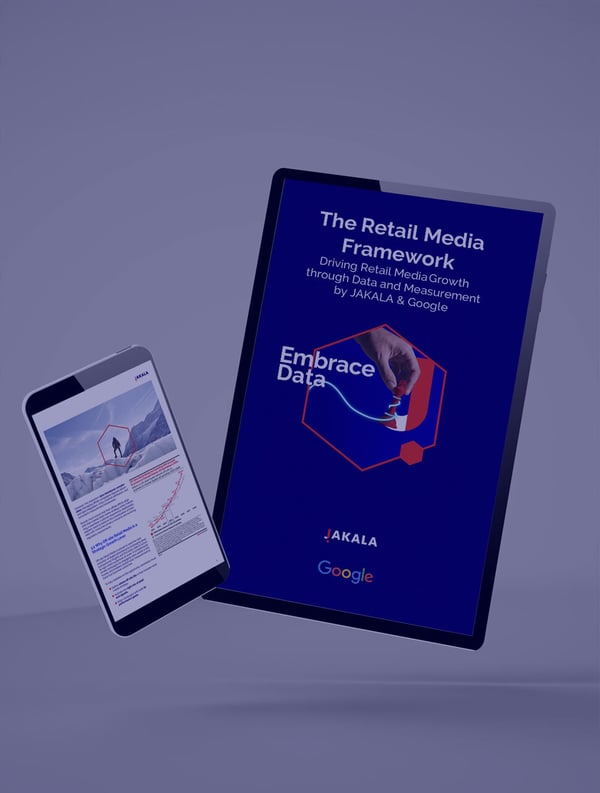On 1 July 2023, Universal Analytics stopped working. This means that no more data will be collected in your previous Google (Universal) Analytics account/s. All your previous data will still be available there, but only for approximately 6 months, after which, if you have not exported this data, then it will be lost forever. We know that most of you will have already made the switch to GA4 or are currently in the process of this; however, this does not mean that this article will not be useful to you. On the contrary, we have migrated hundreds of analytics accounts to GA4, and what follows is some best practice advice and top tips on how to make the most of this migration which we have learnt over the last few years. Though this article will primarily explore GA4 implementation, which may be slightly outside your job scope, we recommend that you read this still, as the best reporting and use of data is only possible with the right data stream setup, and we will show you what’s possible in this origin stage, so that you are better equipped with the knowledge of what GA4 can measure, which you can then filter and report back to your team moving forward.
GA4 Implementation – Top Tips
Published on July 10, 2023

Introduction
GA4 Events
“Everything GA4 does is based on “events”.”
GA4 is exclusively based on tracking “events”, if there are no “events” setup, then no data will be collected. This is Google’s privacy-first solution to the changing tide of user expectations, currently manifest in legislature like GDPR, CCPA and PIPL. With the deprecation of the 3rd party cookie on Chrome (currently forecast to happen sometime in 2024) this will have a substantial impact on Google’s advertising business too, so the predictive modelling that GA4 is built around, combined with the use of (anonymous) user IDs, will allow Google to continue to offer advertisers the means to optimise their ad campaigns. This optimisation will be based around user “events”, basically anything (and I mean everything) that a user does while visiting your website. It is best practice to keep in mind that everything GA4 does is based on “events”. By keeping this fundamental principal top of mind when setting up GA4, this will allow you to better shape the exact data you want to see in your reports and provide you a from-start-to-finish understanding of how this data is collected.
GA4 & GTM
“You may want to adjust the parameters for some of these metrics, for example you may have very long page depth, so 90% could be too long in this instance.”
We recommend that GA4 is setup using GTM (Google Tag Manager) it was designed to be done this way and GTM has greater flexibility than working directly with the code of your website. Please only use one method, if you try to use both, then the data streams will clash, and your analytics will be incorrect. Once you have added the GTM snippet code to your website, then make sure that you have allowed consent for GTM in your CMP (Consent Management Platform) as without this consent, no data will be collected. Please allow consent for analytics (and ads) and update your site disclaimer accordingly.
Next we need to setup the GA4 Configuration tag. Setup your new property in GA4, then copy the “measurement ID”. Move to GTM and setup a new Tag (eg “GA4 Config”) paste the “measurement ID” here and then setup Trigger to fire on All Pages. Submit this and give it a name (eg “Basic GA4 Tracking”) and then publish. It is best practice to give all your submissions detailed names here, as this will help you in the future to more easily find which version you are looking for. Your GA4 is now live (you can confirm this from your GA4 dashboard in Realtime Overview) and is tracking the following:
- Page_View
- Session_Start (ends after 30 minutes of user inactivity)
- User_Engagement (GA4 uses this internally mostly)
- First_Visit (restarts if cookies are deleted)
These are static measurements which are core to the GA4 measurement process, they can eventually be disabled. You can now also track the following enhanced measurements which are adjustable (in GA4, go to Property > Web, and turn on “Enhanced measurement”):
- Scroll to 90% of page depth
- Outbound click (including URL destination)
- Site search (internal text-input site navigation)
- Video start, progress, complete
- File download
- Form start, submit
You may want to adjust the parameters for some of these metrics, for example you may have very long page depth, so 90% could be too long in this instance. GA4 also pre-defines Engaged Sessions in reports as ANY of the following:
- 2 or more pageviews per user
- 10 or more seconds per user
- 1 pageview + 1 conversion (so be mindful what you set as Conversion)
GA4 Conversions
“A top tip here is that while you are in Data Settings, go to Data Retention, and change the default setting from 2 months to 14 months.”
To modify or create custom Events, we recommend that this is done in GTM. It is best practice to work with the delivery platform (GTM) rather than the analytics platform (GA4) as this will provide greater agility and improved workflow auditing going forward. Conversions are setup as Events and provide much deeper data which is then available in your analytics. The following extra data points are available by activating Signals in your GA4 account (in GA4, go to Admin > Property > Data Settings > Data Collection, and turn on “Google signals data collection”):
- Demographic data
- Cross device user identity
- Audiences for Google Ads
A top tip here is that while you are in Data Settings, go to Data Retention, and change the default setting from 2 months to 14 months. This means that all your reports going forward will be based off the last 14 months’ real data and not from the pre-aggregated and expanded data, which is less accurate.
Then by setting up a Conversion event, we are able to get these additional functions:
- Attribution modelling
- Export to Google Ads
- (Purchase is a default GA4 Conversion, which cannot by turned off)
GA4 Audiences
“GA4 has already done all the heavy data lifting here, so why not test these out in your Google Ads campaigns.”
A final tip would be to use the highly flexible functionality that is supplied with GA4 Audiences. GA4 automatically comes with the following predictive audiences (which prior to this would have taken a lot of machine learning and developers work):
- Likely 7-day churning purchasers - Purchasers that are unlikely to visit your site in next 7 days
- Likely 7-day churning users – Users that are unlikely to visit your site in next 7 days
- Likely 7-day purchasers – Users that are likely to make a purchase in next 7 days
- Likely 1st time 7-day purchasers – Users that are likely to make 1st purchase in next 7 days
- Predicted 28-day top spenders – Users predicted to generate most revenue in next 28 days
In Conclusion
To conclude, GA4 is a powerhouse of an analytics tool. It is privacy-centric by design and will likely remain the analytics tool of choice for another 10-20 years. It is estimated that Google Analytics is used by more than 70% of all websites and that millions of these websites have still not made the switch over to GA4. So do not fret if you have yet to make the change, there’s still plenty of time to do it properly, and please feel free to reach out to us directly if you have any follow-up questions or require any specific advice.




